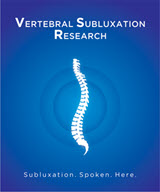Our Responsibility to Address the Vertebral Subluxation

A recent article by a fellow DC columnist addressed what he described as "The S word." "The word (subluxation) has been an anchor hung around the neck of the profession for too long.
It should be cut off and left to slowly sink to the bottom of the sea of antiqued health jargon, along with words like lumbago or rheumatism. Continuing to use this confusing S word is endangering the essence of the 'biological classic concept' that holds true in our day-to-day chiropractic effort to help suffering humanity." Extraordinarily, the author suggests, "using this word to represent a 'mechanically challenged spot' may be a reason that only about 7-15 percent of the population visits chiropractors (according to various sources)."
Yep. All we have to do to open up the floodgates of prospective patients is to use the, uh, much clearer moniker, mechanically challenged spot. I checked several medical dictionaries and couldn't find mechanically challenged spot in any of them. Others want to drop the word subluxation because they think it has different meanings in medicine and chiropractic. I guess they've never heard of context.
Another proposed replacement term is joint dysfunction. Don't they realize that joint means different things to a pothead and an anatomist? This creates confusion with the public. They might infer that chiropractors operate marijuana dispensaries, or that joint dysfunction is something caused by too many seeds, or improper rolling, and that chiropractors manipulate joints to improve the draw.
And while we are at it, let's clean up all words in the lexicon that foster confusion. Conductor means different things to an electrician vs. a musician ... or a trainman. Is a baton something used by a conductor (non-train, non-electrical) to lead an orchestra, or a weapon used by law enforcement to subdue violent criminals? Horse means one thing to a carpenter, something else to an equestrian, and something slightly different to a gymnast. In the U.K., you might ride a lift to a floor in a high rise, while discussing lift with a pilot would be a different conversation. And, of course, drill to a dentist means something very different than its meaning to a soldier in boot camp.
Enough levity. This is serious stuff. In a previous column, I have provided evidence in support of subluxation terminology,2 citing sources as diverse as the World Health Organization to surveys of practicing chiropractors. It should also be noted that ICD-10 now includes vertebral subluxation complex, including codes M99.1 Subluxation complex (vertebral), M99.2 Subluxation stenosis of neural canal, and M99.6 Osseous and subluxation stenosis of intervertebral foramina.
So, why would a faction in the profession seek to ignore or trivialize the tremendous profession-wide support that exists for the term, its acceptance by those outside the profession, peer-reviewed publications, internationally accepted guidelines, and books from major medical publishers? Why are unsubstantiated claims and logical fallacies regarding subluxation terminology uncritically accepted? Perhaps the answer lies in the phenomenon of denialism.
A Wikipedia article provides an excellent overview of denialism. It defines denialism as choosing to deny reality as a way to avoid an uncomfortable truth.3 Author Paul O'Shea remarks, "[It] is the refusal to accept an empirically verifiable reality. It is an essentially irrational action that withholds validation of a historical experience or event."4 Anthropologist Didier Fassin distinguishes between denial, defined as "the empirical observation that reality and truth are being denied," and denialism, which he defines as "an ideological position whereby one systematically reacts by refusing reality and truth."5
The Wikipedia entry notes that "individuals or groups who reject propositions on which a scientific or scholarly consensus exists can engage in denialism when they use rhetorical tactics to give the appearance of argument or legitimate debate, when in actuality there is none."6
Schwartz7 described a case of denialism as "a comedy of incompetence, bombast, and a commitment to deny reason so powerful it overturned good sense and ethics ... This is the same reasoning that the learned men of Galileo's day used when they refused to look in the telescope."
So, let's use the metaphorical telescope. Instead of logical fallacies, unsubstantiated conjecture, political rhetoric, and denialism, the chiropractic profession needs get beyond the issue of existence to launch a research strategy addressing the very real issues associated with vertebral subluxation. The Foundation for Vertebral Subluxation has described such a strategy:8
"The vertebral subluxation research agenda will involve defining the current state of the science, art and literature base to determine what is known and not known about each research objective. This will allow for the most efficient use of limited resources. The agenda centers on five areas including: operational models, measurement, epidemiology, clinical strategies and health outcomes." Basic questions to be addressed include:
What evidence is there that vertebral subluxations exist?
What evidence is there that vertebral subluxations can be measured using valid and reliable means?
What evidence is there that vertebral subluxations lead to adverse health outcomes?
What evidence is there that vertebral subluxations can be reduced and/or corrected?
What evidence is there that reducing / correcting vertebral subluxations leads to improved health (or other) outcomes?
We can no longer afford to seek emotionally charged, political solutions to scientific questions. The question is whether the profession has the vision, maturity and resolve to support such an effort.
References
Hanks J. "It's About the Word." Dynamic Chiropractic, July 1, 2013.
Kent C. "Subluxation, Science and the Flat Earth Society." Dynamic Chiropractic, March 26, 2009.
Maslin J. "Michael Specter Fires Bullets of Data at Cozy Antiscience in 'Denialism'." The New York Times, Nov. 4, 2009.
O'Shea P. A Cross Too Heavy: Eugenio Pacelli, Politics and the Jews of Europe 1917-1943. Rosenberg Publishing, 2008.
Fassin D. When Bodies Remember: Experiences and Politics of AIDS in South Africa. Volume 15 of California Series in Public Anthropology, University of California Press, 2007.
McKee M, Diethelm PA. How the growth of denialism undermines public health. Brit Med J, 2010;341:1309-1311.
Schwartz SA. False equivalencies and the mediocrity of nonlocal consciousness research criticism. Explore, 2013;9(3)131-135.
McCoy M, Kent C. Vertebral Subluxation Research: An Agenda to Explore the Epidemiology of Vertebral Subluxation and the Clinical Outcomes Related to Management. A. Vertebral Subluxation Res, Aug. 5, 2013. Full text available free online.

Blogs
- The Chiropractic Cartel: A Look Back at Bias in Accreditation and its Imact on Today's Profession
- Inside Montana's Chiropractic Monopoly: ACA & MCA's Brazen Board Takeover
- Concerns Grow About Control of the NY State Chiropractic Board by the ACA - Use of X-ray in NY Under Threat
- Reproductive Health Information and Chiropractic Care: Navigating New Privacy Regulations
- Navigating Substance Use Disorder (SUD) Consent: What Chiropractors Need to Know













